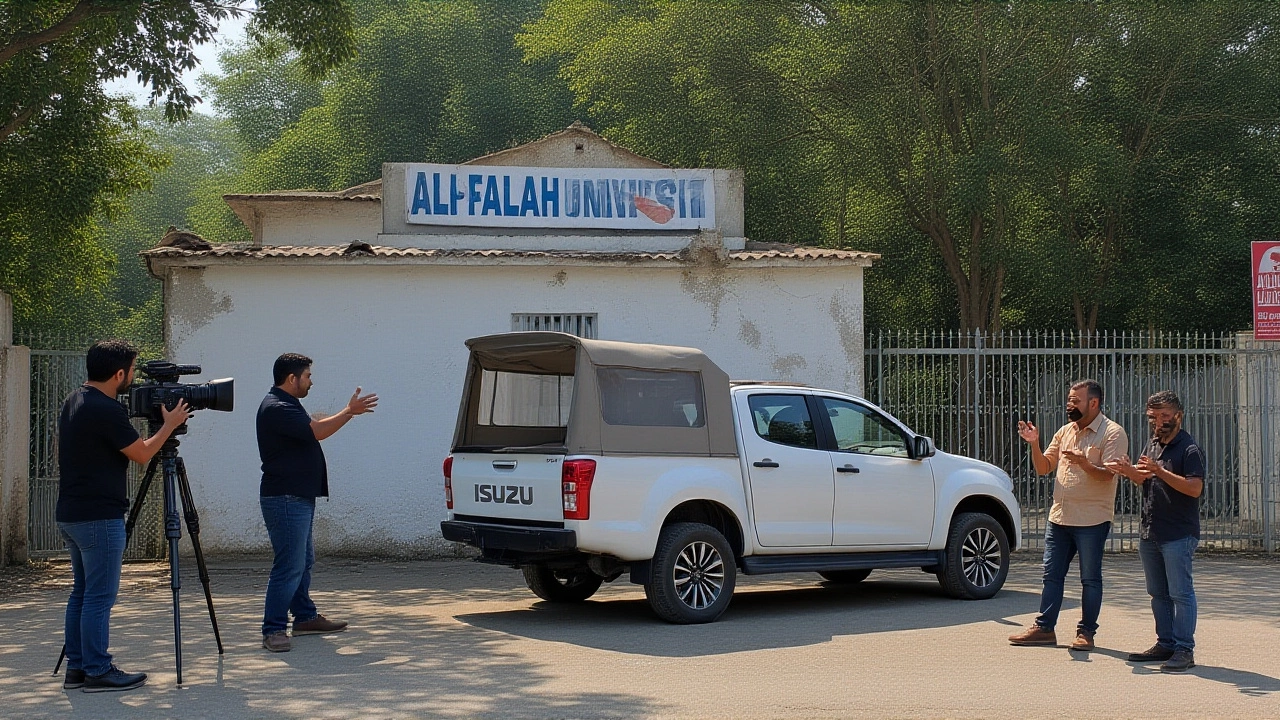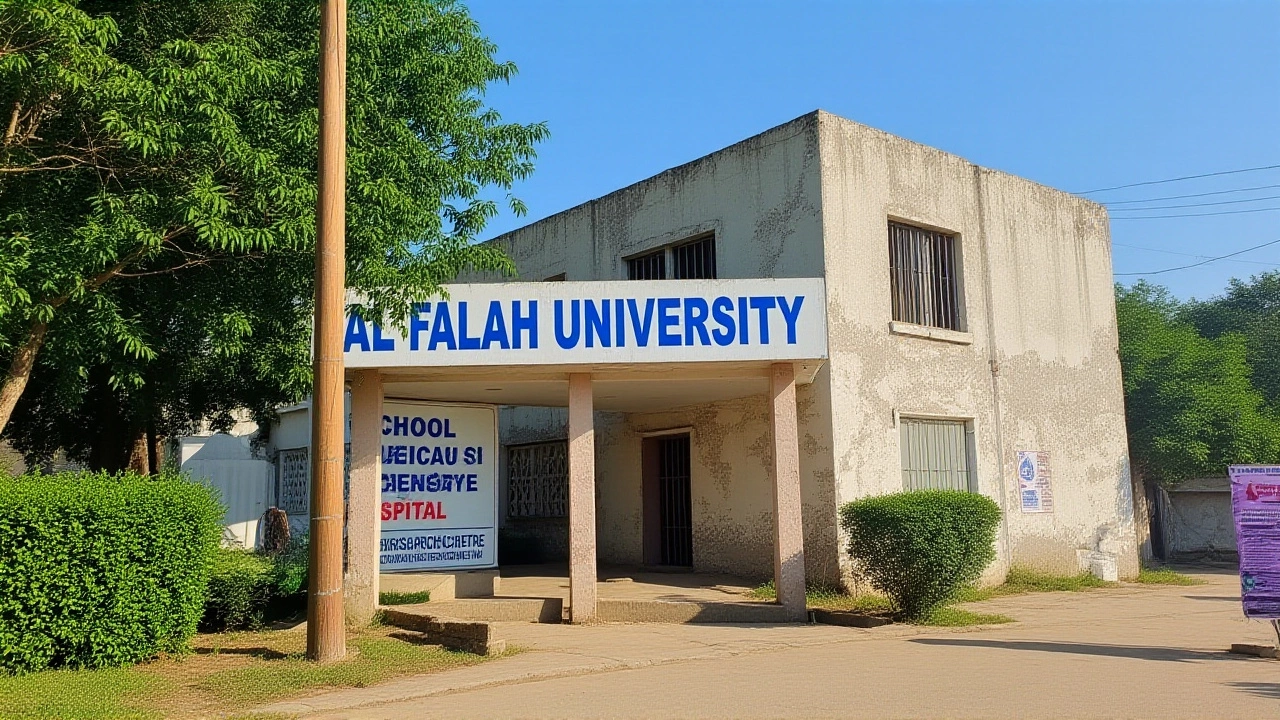
The Enforcement Directorate (ED) arrested Jawad Ahmed Siddiqui, founder and chairman of Al-Falah University, on November 18, 2025, in a sprawling ₹415 crore money laundering case with chilling ties to the November 10 Red Fort blast in Delhi that killed 14 people. The arrest, made at 1:12 PM UTC after dawn raids across 19 locations, wasn’t just about financial fraud—it was the unraveling of what officials now call a ‘white-collar terror module,’ where academic credentials masked criminal networks and funding flowed from fake degrees to explosives.
From Fake Accreditations to Fatal Bombs
The investigation began quietly, with complaints about Al-Falah University’s accreditation. Students had paid lakhs for MBBS seats based on claims of NAAC and UGC recognition—claims that turned out to be fabricated. But what started as an education scam quickly spiraled into something far darker. ED officials found that Siddiqui, who personally controlled every financial transaction, used shell companies to launder proceeds from fraudulent admissions. Nine such firms, all registered at the same Faridabad address, showed textbook signs of fraud: no utility bills, no payroll records, no EPFO filings, and shared mobile numbers across all entities. It wasn’t just corruption. It was a system designed to disappear.The Red Fort Connection
Then came the blast. On November 10, a suicide bomber detonated explosives near the historic Red Fort, killing 14 and injuring dozens. The bomber? Dr. Umar Nabi—a man investigators now say was a faculty member at Al-Falah University’s medical college. Two of his close aides have already been arrested by the National Investigation Agency (NIA). And now, the ED’s forensic accountants are tracing the money trail from student fees to bomb-making materials. A vehicle recovered from one of the raided properties matches the one used in the blast. Large quantities of explosives were found nearby. The link isn’t circumstantial—it’s financial.How a University Became a Terror Network Hub
Al-Falah University, located in Dhouj, Faridabad, wasn’t just a school. It was a front. Investigators say it functioned as a recruitment and funding hub. Doctors, administrators, and even janitors were allegedly part of a network that moved money through dummy companies, then funneled it to operatives. One ED source described it as “a quiet, professional terror engine”—no loud rhetoric, no visible militia, just a medical college with impeccable paperwork and a hidden ledger. The university’s own hospital, meant to serve the public, reportedly doubled as a logistical node. Staff were paid in cash. No bank records. No HR files. Just a single phone number connecting nine companies, all operating in the shadows.
Who’s Affected? The Students Left Behind
While the nation reels from the terror angle, over 50 MBBS students are left in limbo. Their degrees, purchased under false pretenses, may now be worthless. Many come from small towns, mortgaged homes to pay fees. Some had already begun clinical rotations. Now, they’re wondering if their education will ever be recognized. The University Grants Commission (UGC) has yet to issue a statement. The National Assessment and Accreditation Council (NAAC) confirmed the university’s accreditation expired in 2022. But by then, hundreds had enrolled.What’s Next? A 13-Day Custody and a Nation on Edge
The ED has been granted 13 days of judicial custody for Siddiqui—a rare move that signals the gravity of the case. Investigators are now poring over encrypted devices, foreign wire transfers, and digital wallets. They’re also examining whether funds flowed to Pakistan-based operatives, as some NIA sources suggest. Meanwhile, the Delhi Police and NIA are coordinating on the terror angle, while the ED focuses on the money trail. The government has ordered a forensic audit of all private medical colleges in Haryana and Uttar Pradesh. If this case proves the link between academic fraud and terror financing, it could trigger nationwide reforms.
Why This Matters Beyond the Headlines
This isn’t just about one corrupt university. It’s about how easily institutions meant to uplift society can be weaponized. Fake degrees aren’t just scams—they’re gateways. They give people legitimacy. They open bank accounts. They build trust. And in the wrong hands, that trust becomes a weapon. The Red Fort blast didn’t happen in a vacuum. It was financed, planned, and possibly staffed by people who looked like professionals—doctors, administrators, educators. The system didn’t fail because of ignorance. It failed because it trusted too much.Frequently Asked Questions
How did Al-Falah University get away with fake accreditations for so long?
Investigators found that Al-Falah University exploited loopholes in regional accreditation oversight. While NAAC and UGC require annual renewals, many private institutions in Haryana and UP submitted forged documents with minimal scrutiny. The university’s use of multiple shell companies to pay ‘consultancy fees’ to fake NAAC evaluators created an illusion of legitimacy. No one cross-checked bank transactions with official accreditation databases until the ED’s probe began.
What’s the connection between Dr. Umar Nabi and Al-Falah University?
Dr. Umar Nabi was listed as a visiting faculty member in the university’s medical department, though his official role remains unclear. NIA records show he received monthly cash payments from a shell company tied to Siddiqui. His phone records match those of three other suspects arrested in the blast investigation. Forensic analysis of his laptop revealed encrypted files linking him to bomb-making manuals and financial transfers from Al-Falah’s dummy accounts.
Are other universities at risk of similar networks?
Yes. Over 120 private medical colleges in India operate without proper infrastructure but still claim UGC recognition. The ED’s probe has already flagged 17 institutions in Haryana, UP, and Bihar with similar shell-company patterns. A preliminary audit found that 40% of these colleges show zero EPFO filings despite claiming to employ over 100 staff. Experts warn this could be the tip of a much larger iceberg.
What happens to the 50+ MBBS students enrolled at Al-Falah?
The Medical Council of India has suspended recognition of Al-Falah’s medical program. Students may need to reappear for entrance exams or transfer to other institutions. The government is considering a special relief package, but no formal policy exists yet. Many students have already paid up to ₹12 lakh in fees—money now likely lost. Some are already filing civil suits against the university’s trust.
Why did it take so long for authorities to act on the fake accreditation claims?
Complaints were filed as early as 2023, but local education departments dismissed them as ‘student grievances.’ The university had powerful political connections, and its hospital provided free services to low-income communities—creating public goodwill. It wasn’t until the Red Fort blast triggered a national security review that the ED and NIA were given full access to financial data. By then, the trail was cold—and the money, mostly gone.
What’s the likelihood of terror financing being proven in court?
The evidence is strong but complex. The ED has recovered bank records showing ₹18.7 crore transferred to accounts linked to Pakistan-based operatives via third-party hawala channels. The NIA has confirmed that the same accounts received payments on the same days as bomb component purchases. However, proving direct intent—that Siddiqui knew funds were for terrorism—will be the prosecution’s biggest hurdle. Without a confession or intercepted communication, it hinges on circumstantial financial forensics.